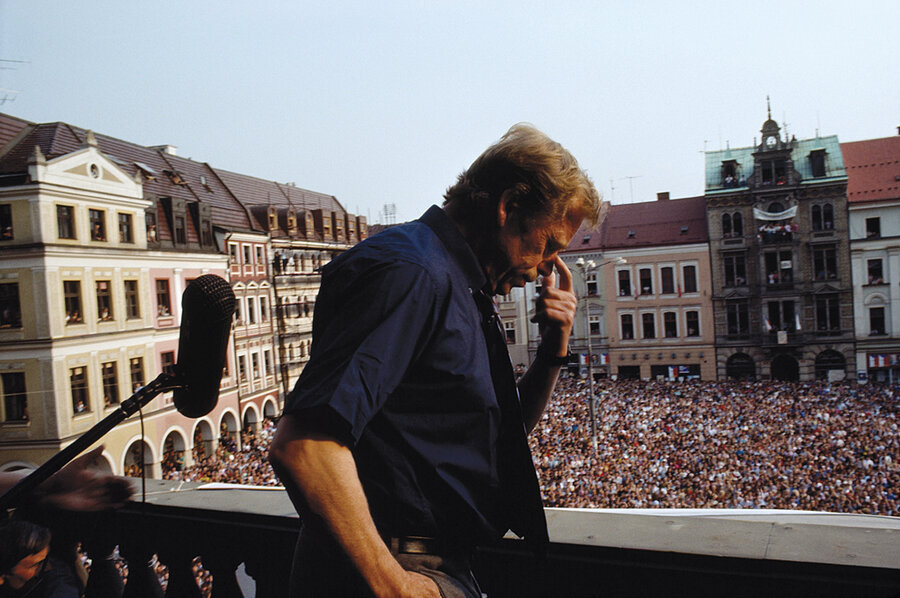Revolution 2011: What comes next is not the end of the story
Loading...
George Orwell’s “Animal Farm” told the story of a stirring revolution dedicated to the proposition that all animals are created equal. One thing led to another, however, and tyranny by pigs replaced tyranny by humans. In the end, the farm’s one great commandment read: “All animals are equal, but some animals are more equal than others.”
Orwell’s novel was an apt description of what happened in the French and Russian revolutions. Louis XVI was bad, “the Terror” and Napoleon were worse – and the czar was nothing compared with Stalin.
It’s easy to be cynical about revolutions. They all start with the excitement of mass protests, the unfurling of defiant banners. As the old order crumbles, strangers hug and vow to recreate the world. Then disappointment sets in, bickering begins, and the revolution runs aground.
Even that is not the end of the story, though. French democracy is now well established. And while modern Russia may not be a model of freedom and human rights, it is a far cry from where it was only 20 years ago.
In a way that people will remember for generations, a revolutionary spirit has been loosed across a broad swath of the world. Historians compare 2011 with 1848 and 1989. (For an indepth look at the current year of revolution, see this Monitor report.)
Yet you can also sense that phase 2 is coming. Egyptians and Tunisians are wondering if there really will be substantive progress toward democracy or if the old guard is just rearranging the furniture. Ethnic and ideological divisions are rising in places like Bahrain and Saudi Arabia. Libyan and Iranian rebels face the lethal power of regimes fighting for their lives.
The most admired revolution in recent years has the “Velvet Revolution” of 1989, when a bemused playwright led thousands of Czechs in the gentle overthrow of communist rule. A few years after the revolution, I heard Vaclav Havel reflect on the problem that occurs when the ice of dictatorship thaws.
“It turns out that in the communist countries of Eastern Europe, history came to a standstill,” he told a conference of political thinkers in Prague in 1992.
“Now history has resumed and many nations are going backwards, remembering past peril and boundaries that once existed. This process of remembering is a very dangerous process.”
Serious conflicts broke out in Eastern Europe in the post-’89 era, especially in the Balkans. What might that mean in the Middle East?
Here’s one way to think about it: Open a map of the Middle East and take a look at the Fertile Crescent. Straight-line borders transect the region. The best guess as to who drew them is Sir Percy Cox, a British emissary who favored bow ties and felt fedoras. He is thought to have inked the boundaries at a 1921 desert summit with Saudi monarch Ibn Saud. Others credit Britain’s colonial secretary, Winston Churchill, with carving up the post-Ottoman world during a secret conference in Cairo.
Both men probably played a role. But people living within those boundaries have long chafed at what they see as the arbitrary nations created by colonial bureaucrats and the tribal chiefs who were anointed to run them. As the old Middle East order collapses, questions are likely to be raised as they were after the fall of communism.
Many questions will lead to conflict. Why does one family have so much wealth, one tribe so much clout? If we control our destiny, why abide by conditions set by foreigners 90 years ago?Some Middle East nations will navigate these waters as smoothly as the Czechs have done. Others may fall into civil war, conflicts with neighbors, or new forms of authoritarianism.
The thing about history, though, is that the book never ends. There may be many bad decisions made after the ice of thaws. But there’s always another chapter after that – which means another opportunity to get it right.
John Yemma is the editor of The Christian Science Monitor.





